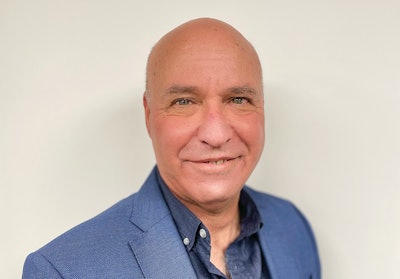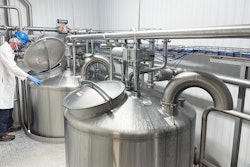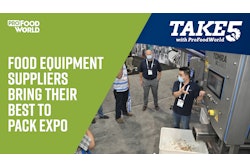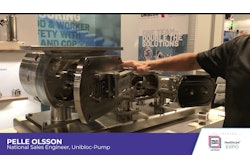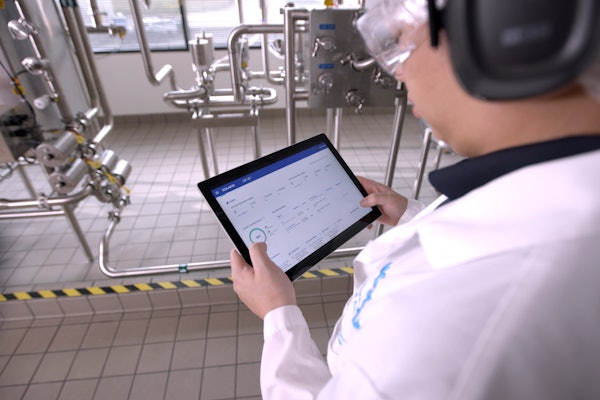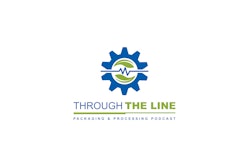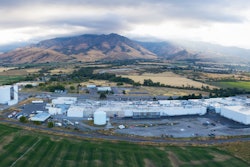An estimated 600 million people in the world—almost one in 10—fall ill after eating contaminated food, and 420,000 people die every year, according to the World Health Organization. Environmental pathogens within food production processes remain a considerable risk to food safety, with the presence of various bacteria in the production environment directly linked to the contamination of food.
Traditional sanitizers used on food production surfaces work for only a short time, so need to be reapplied regularly to the contaminated surfaces. Israeli start-up Bio-Fence has developed a breakthrough technology that acts as a topcoat layer on surfaces, prolonging the efficiency of traditional sanitizers. When the surface is sanitized with a traditional sanitation agent such as chlorine, Bio-Fence polymers within the topcoat extend the chlorine’s sanitization activity and improve its efficiency.
In an 11-week proof of concept (POC) in a hot dog peeling room, all traces of listeria spp in this highly sensitive food production environment were successfully eliminated. Despite repeated, strict cleaning and disinfection routines, the facility had previously encountered listeria spp, particularly on the production floor. Following the application of the Bio-Fence coating, listeria was eliminated from the floor surface.
Ofer Shoham, CEO of Bio-Fence and an expert in food hygiene for almost four decades, explains how the technology works.
PFW: Tell me how Bio-Fence got started as a company and what the premise is behind your technology.
Shoham: In 2018, I was approached by the Kitchen Hub, which is the largest food tech incubator in Israel. They know me for my many years of experience as a food hygiene specialist working with the Strauss Group. They presented me with a technology that was very interesting for me, because I was looking for that kind of direction as a solution.
So, we established a company at the end of 2018, and we recruited a scientific team and we started to develop the technology. I was appointed as the co-founder and CEO, and this is how we started the company. The lab is located in Jerusalem, as most of the scientists and researchers were living there.
We are now shipping the product into the market, but the company started on an idea—there was not really any product, using an organic polymer, that when you add it to a painted coating, it is able to bind and stabilize biocides on the surface. This is the heart of the technology. So it’s actually creating antimicrobial surfaces, but not using antimicrobial coating.
PFW: Explain that a bit more. What is the difference between using the Bio-Fence product as opposed to an antimicrobial coating on a plant floor?
Shoham: Most of the technology that exists today for antimicrobial coatings is based on the silver ions and other technologies which are toxic and not efficient. Our technology is quite unique. We are not creating antimicrobial coatings but creating coatings that—when you apply them on a surface and use biocides such as chloride peroxide—those biocides instead of working for five to 10 minutes, they’ll stabilize on the surface for hours, days, weeks, and even months. And by that we are creating an antimicrobial surface.
PFW: That sounds like an important distinction that food manufacturers wouldn’t necessarily understand.
Shoham: Exactly. The problem with antimicrobial coatings that has existed for centuries is that the food producers really don’t believe that it can support them with their problems because they’ve tried that, and they probably got some disappointing results. Our approach is totally different. We are using the powerful ability of ordinary disinfectant that is being used day to day in the food facilities. But instead of vanishing from the surface after a few minutes, they are staying active for a very long period of time. And by that they eliminate any presence of pathogens on those surfaces for days. This is the uniqueness of our technology.
PFW: Back up a bit and explain what the issues are that food producers are facing. What situation are you working to solve?
Shoham: I’ve been working with the food industry for so many years trying to support them to solve food safety issues around environmental pathogens like salmonella, E. coli, listeria, pseudomonas, Campylobacter—those pathogens are causing illnesses with humans who consume the food. If you look at the food industry, they’re putting so much effort into eliminating the presence of those pathogens in the food product. But the problem is that they are losing control when it comes to the environment. They have some control by using state-of-the-art equipment using processing like cooking the food or freezing it before packaging. But when it comes to the influence of the environment, they’re losing control. Those pathogens are there in the environment, and they have very limited ability to control and to eliminate that by just using cleaning and sanitation protocols.
 | In this unPACKed podcast, listen to ProFood World's Aaron Hand talk with PMMI's Sean Riley about the COVID-19 pandemic's effect on food processing facilities. |
When you produce food, usually you use raw material processing and then you do some zoning where the food has been cooked or fried, and then it’s been frozen or chilled and then it’s packed. By physically separating the raw material and the processing from the heat treatment and then from the packaging you probably can eliminate most of the problem. But in that area where the food has already been cooked and is ready to be packed, this is the place where usually the contamination occurs.
There are many food products which are usually consumed without cooking—dairy products, fresh vegetables, ready-to-eat meat products like hot dogs (because you don’t need to cook the hot dogs, you just warm them in the microwave), frozen pizza, snacks… All of those products are very sensitive to those pathogens.
I saw the frustrations of the food producers. They put so much money and work in order to produce safe food, and out of nowhere comes a contamination of listeria in this frozen pizza. I did a lot of work with them to identify the source of the contamination. And it was always the environment, not the equipment, because the equipment they can clean and disinfect daily. And they can measure the result of sanitation by doing sampling and GMP and HACCP and all of that. But the environments are the floor, the walls, the ceiling, the infrastructure places which are remote, which they cannot reach and do the thorough cleaning—those are the places where these pathogens exist. And they are coming in contact with the food by different kinds of vectors. It can be a mist of water, it can be dust, it can be workers walking around, it can be packaging, it can be almost everything, insects, and so on.
So when the Kitchen told me about this technology, I said yes, I want to try to develop that input product. Because, for me, it was a real game changer after so many years trying to solve that problem and working together with the food industry not getting the results. Because if you look at the incidents of contamination from pathogens, it’s growing every year.
PFW: Let’s talk about how the Bio-Fence technology works. When the polymer is applied to plant surfaces, it prolongs the effectiveness of the sanitizer—you mentioned for days or even months. How do users know when they need to retreat their surfaces?
Shoham: When the surface has been coated—the floor or the walls or the infrastructure—and then you do your regular sanitation regime, you clean and then you disinfect with the biocide, and this biocide is stabilized on the surface. When you’re doing this normal sanitation process, you actually disinfect, but also charge the coating with the biocide and make it able to be active until the next sanitation.
Daily sanitation is done when you have a lot of organic material in production. There are some production environments which are cleaned weekly or monthly. It depends on the environment—the walls might not be cleaned every day, they can be cleaned once a week. If you go into storage area, it can be done only once a month. Our technology is adapting to the sanitation regime—it’s following the same way you do today. We also give tools for the customer to test if the biocide is still active on the surface.
PFW: Tell me about the proof of concept that Bio-Fence did with the hot dog peeling room.
Shoham: When we wanted to evaluate our technology in a real-life situation—not just lab tests and small POCs—I said to myself, I need to choose a place where the condition is so bad and so challenging that if we succeed there, we can succeed everywhere. Working with the food industry in Israel for almost four decades, I know all of them. And I know what kind of problems they are dealing with. A hot dog peeling room is a place which contains all the parameters that listeria will be very happy to be in—it’s kind of a flight to the Caribbean for listeria.
There are so many incidents of listeria contamination in hot dogs. When the hot dog is being produced, you take the meat, and you wrap it in a nylon package to shape the size of the hot dog. And then you cook it, with the long chains of hot dogs together being cooked in an oven, and then you take it out. And then you need to peel this plastic cover because it’s not edible; it’s only for shaping the form.
In that area, the peeling machine uses steam and that creates a lot of mist. And it’s a very cold area. And there is a lot of traffic coming in and out of crates, with hot dogs and people coming in and out. And it’s the end of the production, so if there is listeria in the environment, it all came into there.
I know that site, which is a very high-quality site facing that problem for a long time. Although they are practicing five times per day their cleaning procedure, after the cleaning, they are testing the environment and they can find listeria. And so, the objective was of course to prove that our technology can prevent listeria in that area—but also if we can provide a higher standard of hygiene and also ease of use.
PFW: What sort of results did you get from the POC?
Shoham: We saw tremendous improvement. Before that, day by day, they got listeria contamination on the floor; and after the coating, nothing except for one incident that was done on a weekend in which they didn’t follow procedure regarding the using of the biocide. It’s been more than four months now, they keep checking, and there’s no listeria anymore in that facility. This place was suffering for many years of listeria contamination in the environment, and now they are very happy with the result, and they want to extend the coating to other parts of the facility in order to get the same result in other parts of the production.
The conclusion was that our technology works in a real-time challenging condition under heavy organic load in a wet environment using chloride, which is a commonly use biocide in routine sanitation. It successfully eliminated the presence of listeria and also achieved a high level of hygiene, which is reflected by antibacterial total count.
Substantial operation savings can be achieved because you can cut down the cleaning sanitation. You don’t need to stop production five times a day; you just need to clean up once a day. And, of course, there are a lot of other influences related to the environmental impact because you’re using less water, fewer chemicals, saving a lot of energy. And, God forbid, if you have a recall, the need to destroy all the food that you collect, and this of course causing environmental impact and brand damage, which is a huge problem—all of that can be eliminated.
PFW: What other sectors would find this Bio-Fence solution useful?
Shoham: Ready-to-eat foods like dairy, ice cream, frozen foods. But it’s not only limited to that. Recently, the FDA announced a new battle against salmonella in the U.S. from the chicken and then the egg. In order to prevent salmonella, you need to deal with all that supply chain. And one of the places where salmonella is highly spread is in the hatcheries. In hatcheries, you can use these coatings and prevent salmonella from spreading from one flock to another.
One other application: Yeast and mold is a huge problem in the industry, especially for product which has to be mature, like cheese. It’s very important to cut down the use of preservatives in food, but it makes the food more sensitive to contamination from pathogens.
PFW: What are your plans to market in the U.S.? Are there regulatory hurdles?
Shoham: One of the barriers for new technology coming into the food market is regulation. As you know, this area is heavily regulated. The beauty of our technology is that we are free from regulation because we are not producing biocide; we’re introducing a polymer that is being added to the coating paints which already can be used in the food industry. So we can enter the market very, very fast, with almost no limitations.
